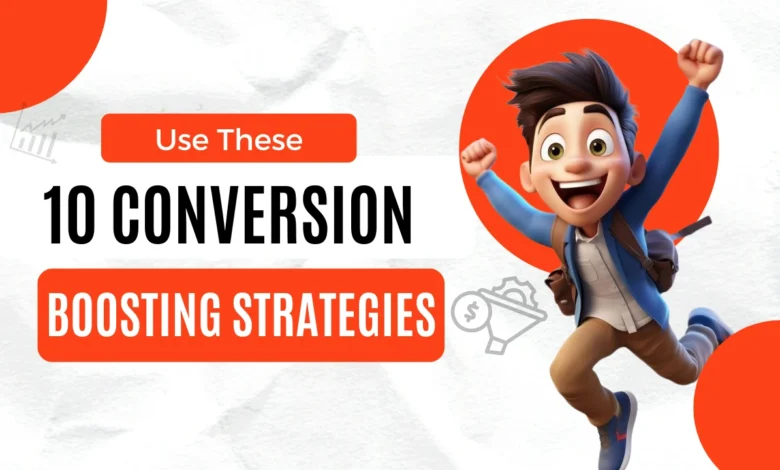Boost Conversions: Proven Optimization Strategies

Table of Contents
Introduction
Conversion Optimization is the art and science of transforming website visitors into loyal customers. In today’s digital landscape, where competition is fierce and attention spans are short, mastering this skill is crucial for businesses aiming to thrive online. This comprehensive guide delves into effective strategies and best practices to enhance your website’s conversion rates, ensuring that your digital presence translates into tangible business success.
Understanding Conversion Optimization
Conversion Rate Optimization (CRO) involves systematically improving your website to increase the percentage of visitors who complete a desired action, such as making a purchase, signing up for a newsletter, or filling out a contact form. Unlike merely attracting traffic, CRO focuses on maximizing the value of existing visitors, making every click count.
Key Elements of Effective CRO
- User-Centric Design: A website should prioritize user experience (UX), ensuring intuitive navigation, fast loading times, and mobile responsiveness.
- Clear Call-to-Actions (CTAs): CTAs should be prominently displayed and compelling, guiding users towards the desired action without confusion.
- Trust Signals: Incorporate elements like customer testimonials, security badges, and industry certifications to build credibility and reduce anxiety.
- A/B Testing: Regularly test different versions of your web pages to identify which elements resonate best with your audience.
- Analytics and Feedback: Utilize tools like Google Analytics and user feedback to understand visitor behavior and identify areas for improvement.
Proven Strategies to Boost Conversion Rates
- Simplify Navigation: A cluttered website can overwhelm visitors. Streamline your navigation to make it easy for users to find what they’re looking for.
- Optimize Landing Pages: Ensure that landing pages are relevant to the ad or link that brought the visitor there, with a clear and concise message.
- Enhance Mobile Experience: With a significant amount of web traffic coming from mobile devices, ensure your site is fully optimized for mobile users.
- Speed Matters: Page load times directly affect user satisfaction and conversion rates. Aim for a loading time of under 3 seconds.
- Personalization: Tailor content and offers based on user behavior and demographics to increase relevance and engagement.
- Exit-Intent Popups: Implement popups that appear when a user is about to leave the site, offering discounts or capturing email addresses to retain potential leads.
- Social Proof: Showcase customer reviews, testimonials, and case studies to build trust and influence purchasing decisions.
- Clear Value Proposition: Clearly communicate the benefits of your product or service, addressing the user’s pain points and how your offering provides a solution.
- Streamline Forms: Reduce the number of fields in forms to make it easier for users to complete them, increasing the likelihood of submission.
- Retargeting Campaigns: Use retargeting ads to re-engage visitors who didn’t convert the first time, reminding them of your offerings.
Common Mistakes to Avoid
- Overloading with Information: Too much information can overwhelm visitors. Keep content concise and to the point.
- Ignoring Mobile Users: Neglecting mobile optimization can alienate a significant portion of your audience.
- Weak CTAs: Vague or hidden CTAs can confuse users. Make them clear and action-oriented.
- Lack of Testing: Not testing different elements can lead to missed opportunities for improvement.
- Neglecting Analytics: Failing to monitor performance can result in stagnation. Regularly review analytics to guide decisions.
Read More: Real Relationship Tips from FPMOMHacks
Conclusion
Conversion Optimization is an ongoing process that requires attention to detail, regular testing, and a deep understanding of your audience. By implementing the strategies outlined above and continuously refining your approach, you can significantly enhance your website’s performance and achieve your business objectives. Remember, the key to successful CRO lies in creating a seamless, user-friendly experience that resonates with your visitors and encourages them to take action.
FAQs
- What is Conversion Rate Optimization (CRO)?
- CRO is the practice of improving your website to increase the percentage of visitors who complete a desired action, such as making a purchase or signing up for a newsletter.
- Why is A/B testing important in CRO?
- A/B testing allows you to compare different versions of a webpage to determine which elements perform best, helping to optimize user experience and increase conversions.
- How can I improve my website’s mobile experience?
- Ensure your website is responsive, meaning it adjusts seamlessly to different screen sizes. Optimize images and streamline content for faster loading times on mobile devices.
- What role does social proof play in conversion optimization?
- Social proof, such as customer reviews and testimonials, builds trust and credibility, influencing potential customers’ decisions and increasing conversion rates.
- How often should I review and update my CRO strategies?
- Regularly review your CRO strategies, at least quarterly, to assess performance and make necessary adjustments based on user behavior and market trends.



